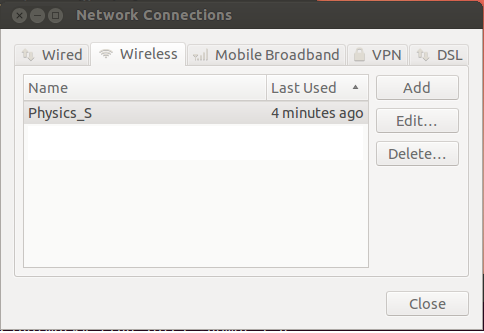Laptops
Under construction more information to follow
Public printers in the Physics Department are set up via print servers. To allow users to print from their own devices on eduroam and other BYOD networks we have setup a Internet Printing Protocol (IPP) print service on https://duerer.physics.ox.ac.uk
Access restricted to members of Physics including undergraduates. When requested sign in with your Physics credentials adding PHYSICS\ in front of your username i.e. PHYSICS\JBlack.
Categories: Laptops | Printing | Windows
![]()
Categories: Apple | Disk Encryption | FileVault | Laptops | Mac
This page now only exists as a reference for people who have already enabled laptop network software. The mechanism is no longer supported. You may like to read the page below for information helping you with debugging.
We never enabled the network software on laptops by default. There are a number of reasons for this:
Categories: Laptops | Linux | central linux | cvmfs | network software
- Select the network manager applet from the toolbar
![]()
- Edit connections --> wireless

- Fill in the details on the Wireless and Wireless security tabs as shown.
Categories: Laptops | Linux | Linux desktop | Network | Networking | Wireless
The following procedures should be followed when connecting equipment to the Physics cable network. This is necessary to prevent disruption to other users from configuration problems on the equipment being connected.
The recommendations below are for equipment which will be more or less continuously connected to the network.
Categories: DAQ | Hardware | Laptops | Network
A MAC address is a unique number assigned to network cards by the manufacturer. Every hardware network card comes with its own MAC address. MAC addresses have the format 00:0F:A7:B5:57:7E. The Physics Network will only allow computers with known MAC addresses to communicate.
How to Obtain Your MAC Address
Note: all of these commands will return multiple results if you should have multiple network cards installed (e.g. if you have a wireless network card in your laptop). The first result listed should generally be the correct one for registration.
If you would like to register a system on the cable/wired network, you will need a Physics Networking Account. This account can be used to access the online cable registration form. We will need the MAC address for the ethernet adapter that you wish to register for the wired network
Public printers in the Physics Department are set up via print servers. All the public Sharp printer-copier-scanner devices are on their own print server called PCOUNTER2.physics.ox.ac.uk and all the other printers are via PRINTSERVERX64.physics.ox.ac.uk for 64 bit operating systems.
Categories: Astrophysics | Laptops | Printing | Theory | Windows


